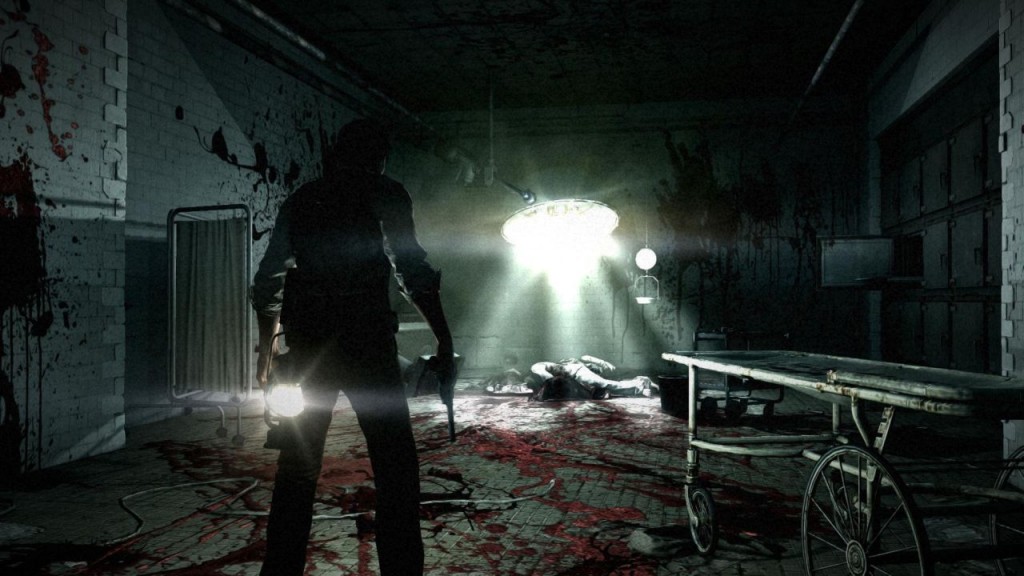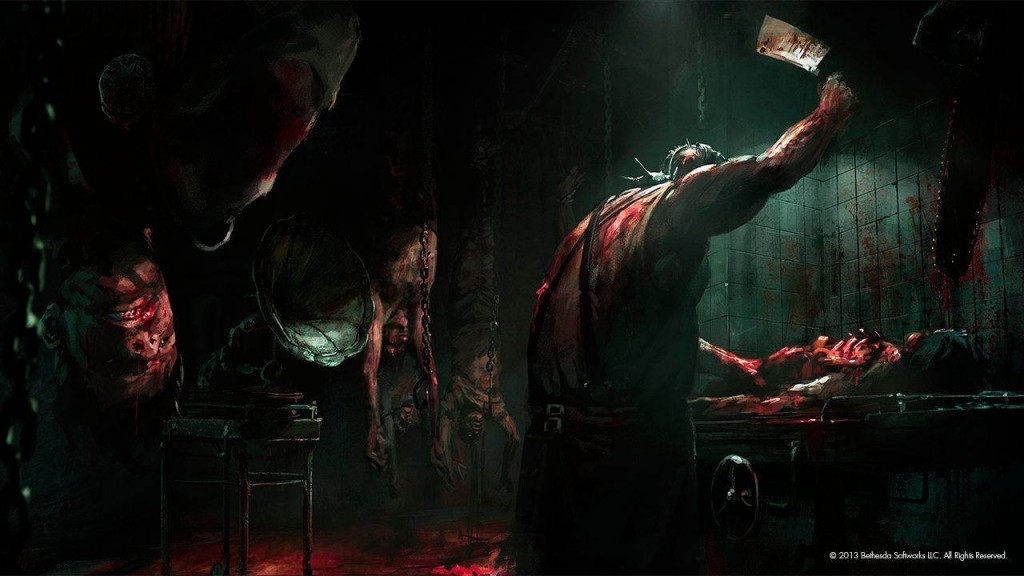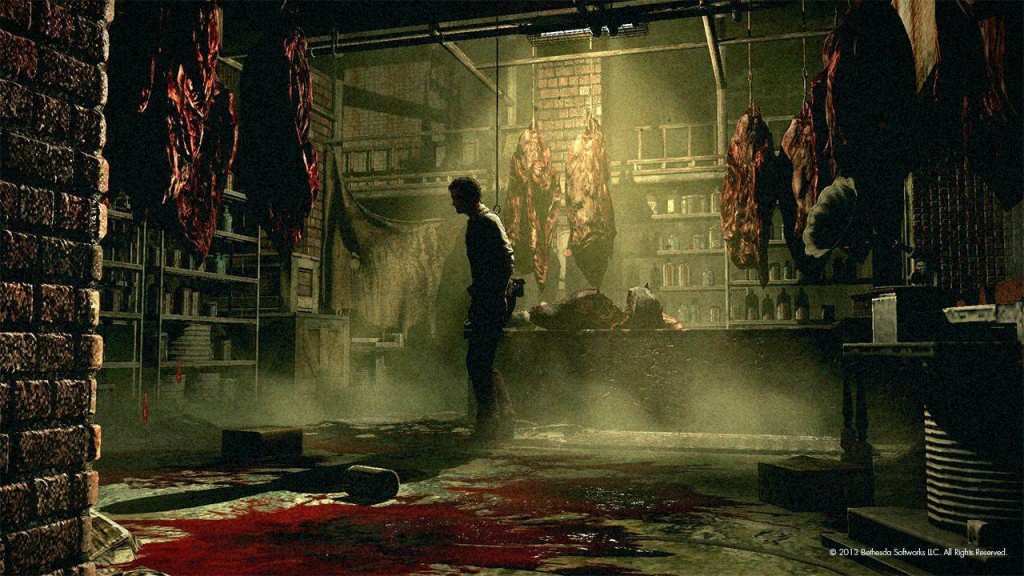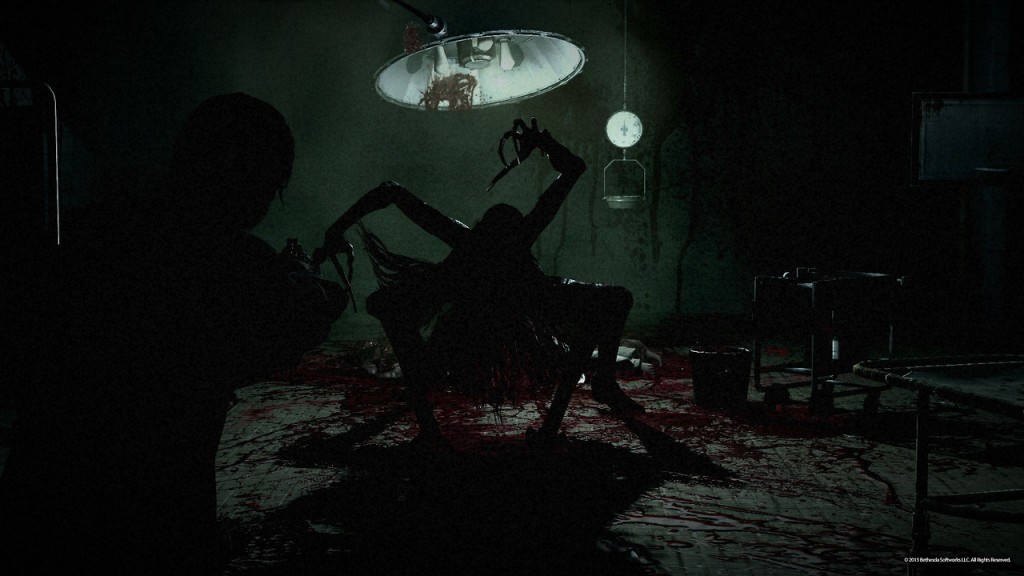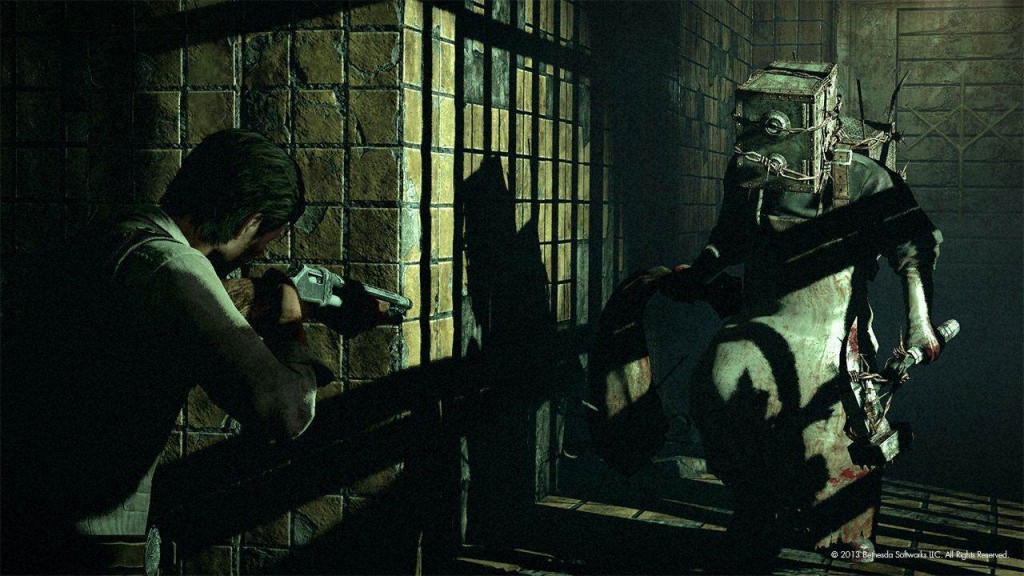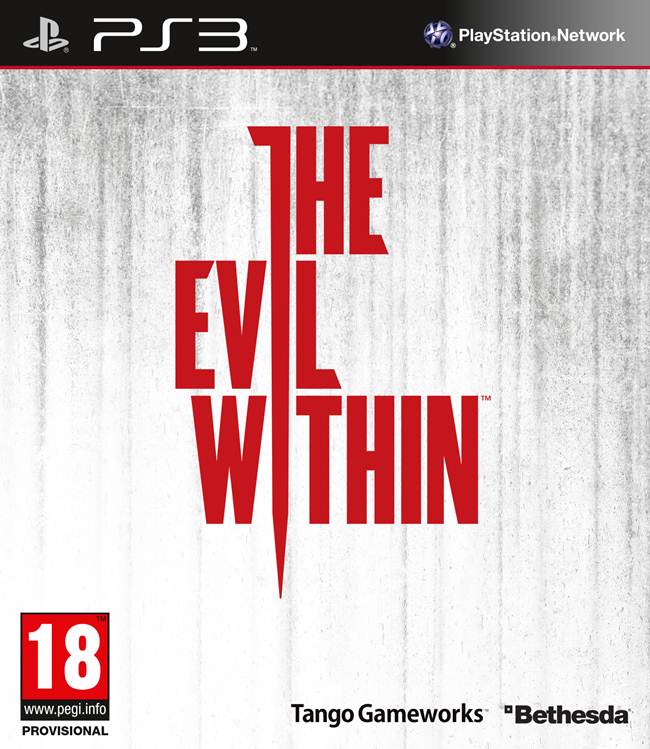
Shinji Mikami’s name carries the weight of expectation. It implies greatness. How could it not? This is the man that made Resident Evil, Dino Crisis, Resident Evil 4, God Hand, Vanquish. Quite the pedigree. If you were to ask people familiar with his work what his greatest achievement is, you’d probably get a few different answers. Those who were fans of the classic Resident Evil games will probably name the original game or its remake. Retro enthusiasts might say Dino Crisis, while those with an eye for more obscure titles might say God Hand. Someone might even throw you for a loop by name-dropping one of his lesser known works, like Resident Evil Outbreak. But the vast, vast majority would probably say the same thing: Resident Evil 4.
And why shouldn’t they? The game is widely regarded as one of the greatest survival horror (or action, depending on who you ask) games ever made. It was the inspiration for Epic Games’ almost-but-not-quite-as-influential Gears of War. It set the tone (and the bar) for action titles for the better part of the next decade. It changes the way people made third person shooters. Simply put, Resident Evil 4 changed the game.
So when Mikami announced that he was returning to the survival horror genre because he disliked how other people were handling it, people got excited. When the game was revealed, and it looked a heck of a lot like the REmake and Resident Evil 4 had a baby, people began to have expectations. Great expectations. Flawed expectations. Expectations of another game like Resident Evil 4. But Resident Evil 4 was a once in a career game, a once in a generation release. And The Evil Within is not Resident Evil 4. We’ll touch on that again a little later. Perhaps now it’s best to start at the beginning.
"The story takes itself very seriously, and is ambitious, especially in terms of structure and the ideas it plays with. Unfortunately, it’s also pretty bad.
The Evil Within begins as detective Sebastian Castellanos, and his partners are called in to investigate mass killings at a local mental hospital. When they arrive, they find the hospital abandoned, save for the dead bodies, despite the copious amount of cop cars that clog the large entryway. Because they’re characters in a horror game, our hero cops decide to go investigate, and Sebastian and company find themselves transported into world of nightmares and madness.
The story takes itself very seriously, and is ambitious, especially in terms of structure and the ideas it plays with. Unfortunately, it’s also pretty bad. The dialogue alternates between horrendous (“You’re Leslie, right? I’m a police officer. Maybe I should help you.”) and functional, and the story itself is largely just a vehicle for Mikami and co. to justify the environments at play. But it’s absurd, grimdark nature clashes with how seriously the narrative takes itself, because the player, from the moment it starts, cannot take the game seriously. The way the game presents itself (in terms of narrative, not tone) prevents it.
Resident Evil 4 didn’t have this problem. The narrative took itself seriously enough that you believed what was going on and had an adequate investment in Leon’s struggle, but it was never all grimdark, all the time. It diffused situations with ridiculous one liners and the power of Leon’s magnificent hair. But The Evil Within doesn’t do that. This story takes itself seriously all the time, and worse still, the story is bad.
"The Evil Within’s gameplay is certainly reminiscent of its predecessor’s, however. In fact, it’s basically Resident Evil 4 with the neat ability to move (albeit slowly) and shoot at the same time, Mikami be praised. The gameplay is visceral and satisfying, and there’s a lot of pleasure to be had in that perfectly placed headshot or in lighting an enemy on fire with a match just before he pushes himself up off of the floor.
If Resident Evil 4 is the Adam West version of Batman, serious enough to keep you engaged, but smart enough to be funny about it, then The Evil Within is Grant Morrison’s Arkham Asylum: A Serious House on Serious Earth. The difference is that Arkham Asylum earns the serious nature of its story, while The Evil Within doesn’t. In Resident Evil 4, the story compliments the gameplay. It is an essential part of that game’s tone and what it is. In The Evil Within, the plot is little more than window dressing. But The Evil Within is not Resident Evil 4.
The Evil Within’s gameplay is certainly reminiscent of its predecessor’s, however. In fact, it’s basically Resident Evil 4 with the neat ability to move (albeit slowly) and shoot at the same time, Mikami be praised. The gameplay is visceral and satisfying, and there’s a lot of pleasure to be had in that perfectly placed headshot or in lighting an enemy on fire with a match just before he pushes himself up off of the floor. There’s a level of tension there, too. Resources are scarce. Missing a shot will cause you to curse out loud, but there’s no better feeling than hitting a critical headshot with your last pistol round and watching an enemy’s head explode into a shower of blood and brain matter.
It’s a game of precision, but a challenging one, that tasks you with taking down quick enemies and knowing the systems inside out. It’s here, in the systems, that Mikami’s eye for design has always shone. Whether it’s learning about all of the different types of ammunition that you can load into your crossbow, or learning how to knock enemies down with a well placed bottle to the face so you can run up and execute a stealth kill, The Evil Within demands mastery. Its emphasis on “figure it out” design keeps you on your toes, and it makes encounters much more satisfying than they would be otherwise.
"That said, not all of the design systems in The Evil Within compliment what the game is going for. The game occasionally forces you into stealth segments that are poorly designed and extremely linear, and these segments often introduce elements, like the ability to hide in lockers and under beds, and then promptly discard them.
That said, not all of the design systems in The Evil Within compliment what the game is going for. The game occasionally forces you into stealth segments that are poorly designed and extremely linear, and these segments often introduce elements, like the ability to hide in lockers and under beds, and then promptly discard them. It’s not much of a loss, really, considering that you’ll never use them except when the game forces you to, but these sections, and the mechanics that go with them, feel poorly thought out and incredibly pointless.
It’s procedural, devoid of the risk versus reward nature of truly satisfying stealth. One segment early on has you avoiding a large enemy with a chainsaw. You’ll duck inside a locker, wait till he goes away, then head into the next area, and distract him with a bottle before making a beeline to the door. There’s no challenge in it, no feeling of reward or execution. It will play the same way for everyone who plays the game, because no other scenario works. There are no other options available to you. Instead, it serves to frustrate you. You wait for him to complete his patrol pattern, throw the bottle, and move on. The only time you’ll fail is when your impatience gets the better of you. Otherwise, the segment just serves to waste your time. The upside is that these sections are brief and infrequent, so they don’t get in your way too much.
The other knock against The Evil Within’s “figure it out” design style is that it can lead to a lot of frustration, especially in boss fights. The game is largely very intuitive, and what you’re supposed to do is communicated effectively without being spelled out. Sometimes, however, you’ll find yourself going through every option in your bag of tricks before finally lucking into the correct thing at the correct time. It’s especially frustrating when the game makes you go through the motions before an encounter all over again, or locks off the area you were just in because you decided to explore what you thought was “off the beaten path,” only to realize you were wrong.
"Most importantly, that atmosphere, and those encounters, are effective. You never feel safe in The Evil Within, not even in the save rooms, long a bastion of reprieve for the player in the genre. The Evil Within, however, never tones down the tension, never lets you be off guard, never stops messing with you.
One area is where The Evil Within excels is atmosphere. A large part of it is because Tango Gameworks has an incredible understanding of composition and the underpinnings of horror. It’s the little things: the long walk down a dark hallway, a door slightly askance at the end, light bleeding through the cracks, the slow way Sebastian opens doors, the way doors close or disappear behind you, how the screen flickers when you enter certain areas, when you notice something frightening and the lights go out and the fog rolls in.
These are the moments that The Evil Within is at its best, and impressively, the game keeps things varied for a majority of its runtime. It’s not afraid to throw an enemy at you one time, and then never use it again. Likewise, it’s not afraid to throw the same enemy at you multiple times, and just vary up the environments, and it’s amazing how much a change in atmosphere and location changes an encounter. Suffice it to say, you’ll almost never see the same thing twice, and if you do, well, there’s probably a twist somewhere down the line.
Most importantly, that atmosphere, and those encounters, are effective. You never feel safe in The Evil Within, not even in the save rooms, long a bastion of reprieve for the player in the genre. The Evil Within, however, never tones down the tension, never lets you be off guard, never stops messing with you. Just when you feel safe, it’ll turn off the lights and force you to explore areas you didn’t even know existed. Not even Resident Evil 4 had the balls to do that.
"Some people will no doubt complain about the black bars that grace the top and bottom of the screen (full disclosure: I stopped noticing them after hour two) or about the occasional stutter in the frame rate, but these are ultimately minor problems.
Long story short, that refrain is best way to describe The Evil Within. It is created in its image, makes sacrifices at its demonic altar, looks up to it like a big brother, but The Evil Within is not Resident Evil 4. But that’s okay, because it’s not trying to be. It takes cues from it, yes, has learned from it, certainly, is better for it, absolutely, but it’s not it. What it is is a very good, even perhaps great, horror game. Some people will no doubt complain about the black bars that grace the top and bottom of the screen (full disclosure: I stopped noticing them after hour two) or about the occasional stutter in the frame rate, but these are ultimately minor problems.
It’s not a perfect game, no. It’s not the crowning achievement in Mikami’s ridiculously impressive resumé; probably not even in his top three. I’ve heard it described alternatively as Resident Evil 4 0.8 and Resident Evil 4 1.2, and in a way, both are correct. As a complete game, it is not as good as Resident Evil 4. That’s a high bar for any game, and probably not possible, anyway. That’s the 0.8. But it would not have been possible without Resident Evil 4. It is built on its ideas, owes its successes to that foundation, and in some ways, is a better game. That’s the 1.2.
It’s not a masterpiece the way Resident Evil 4. It doesn’t have the humor, nor is it as refined. Or, to put it another way, it’s not Adam West’s Batman. It’s more like Arkham Asylum, save for the classic status. A serious house on a serious Earth. It’s a great game, and a return to form for Mikami. But The Evil Within is not Resident Evil 4 is. And you know what? There’s nothing wrong with that.
This game was reviewed on the PlayStation 4.
Excellent atmosphere. Satisfying core gameplay. Varied encounters and legitimate scares. Scarce resources add tension to just about every area.
The writing is bad and the plot takes itself far too seriously. Occasional framerate stutters and black bars will bother some people.









